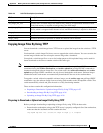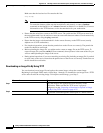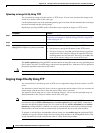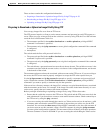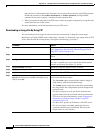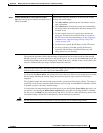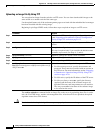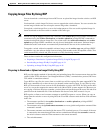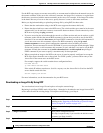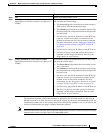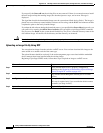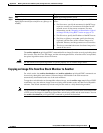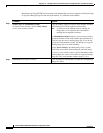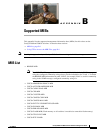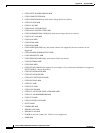
A-33
Catalyst 2960 and 2960-S Switch Software Configuration Guide
OL-8603-09
Appendix A Working with the Cisco IOS File System, Configuration Files, and Software Images
Working with Software Images
Copying Image Files By Using RCP
You can download a switch image from an RCP server or upload the image from the switch to an RCP
server.
You download a switch image file from a server to upgrade the switch software. You can overwrite the
current image with the new one or keep the current image after a download.
You upload a switch image file to a server for backup purposes. You can use this uploaded image for
future downloads to the same switch or another of the same type.
Note Instead of using the copy privileged EXEC command or the archive tar privileged EXEC command, we
recommend using the archive download-sw and archive upload-sw privileged EXEC commands to
download and upload software image files. For switch stacks, the archive download-sw and archive
upload-sw privileged EXEC commands can only be used through the stack master. Software images
downloaded to the stack master are automatically downloaded to the rest of the stack members.
To upgrade a switch with an incompatible software image, use the archive copy-sw privileged EXEC
command to copy the software image from an existing stack member to the incompatible switch. That
switch automatically reloads and joins the stack as a fully functioning member.
These sections contain this configuration information:
• Preparing to Download or Upload an Image File By Using RCP, page A-33
• Downloading an Image File By Using RCP, page A-34
• Uploading an Image File By Using RCP, page A-36
Preparing to Download or Upload an Image File By Using RCP
RCP provides another method of downloading and uploading image files between remote hosts and the
switch. Unlike TFTP, which uses User Datagram Protocol (UDP), a connectionless protocol, RCP uses
TCP, which is connection-oriented.
To use RCP to copy files, the server from or to which you will be copying files must support RCP. The
RCP copy commands rely on the rsh server (or daemon) on the remote system. To copy files by using
RCP, you do not need to create a server for file distribution as you do with TFTP. You only need to have
access to a server that supports the remote shell (rsh). (Most UNIX systems support rsh.) Because you
are copying a file from one place to another, you must have read permission on the source file and write
permission on the destination file. If the destination file does not exist, RCP creates it for you.
RCP requires a client to send a remote username on each RCP request to a server. When you copy an
image from the switch to a server by using RCP, the Cisco IOS software sends the first valid username
in this list:
• The username specified in the archive download-sw or archive upload-sw privileged EXEC
command if a username is specified.
• The username set by the ip rcmd remote-username username global configuration command if the
command is entered.
• The remote username associated with the current TTY (terminal) process. For example, if the user
is connected to the router through Telnet and was authenticated through the username command,
the switch software sends the Telnet username as the remote username.
• The switch hostname.



